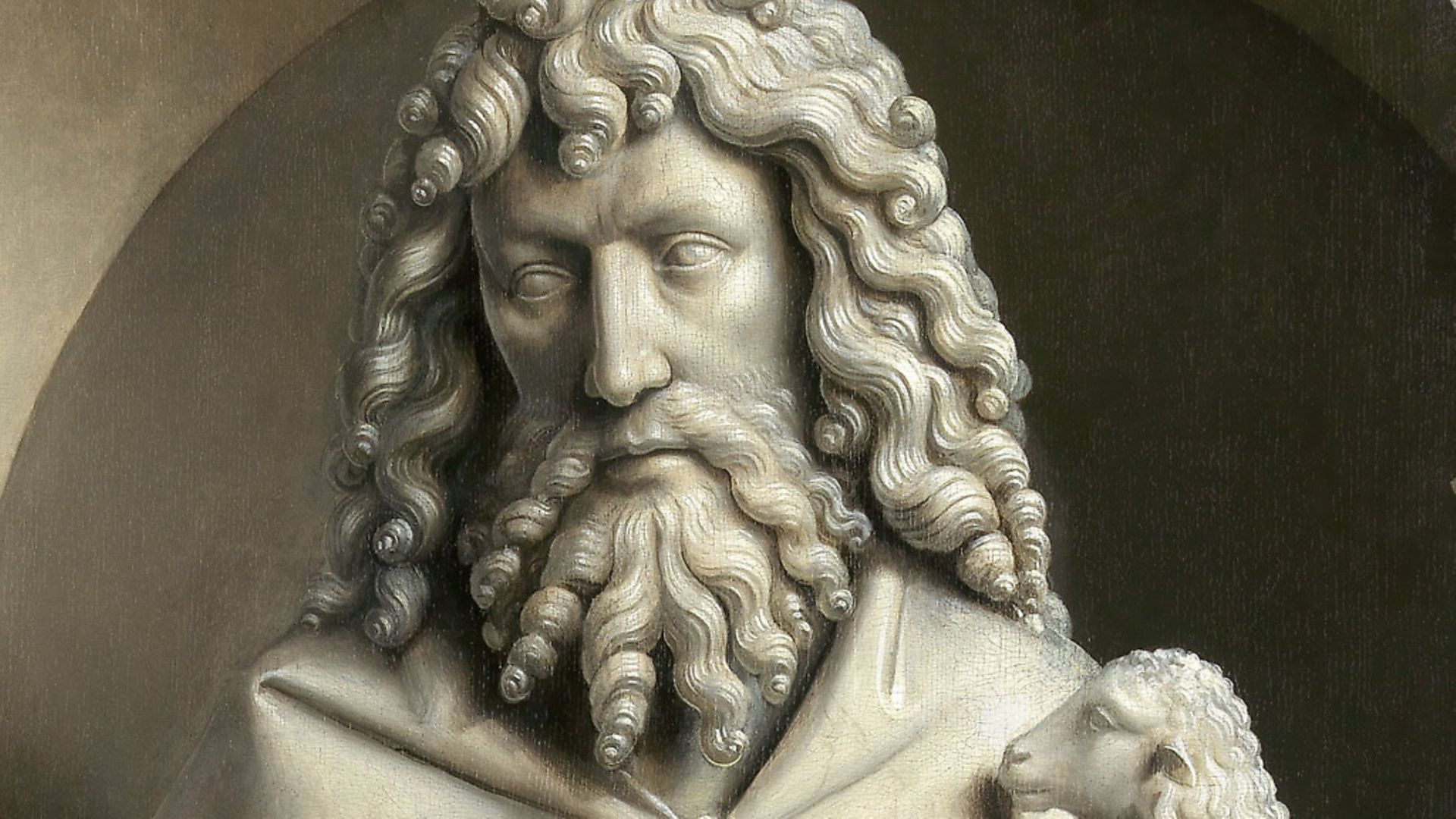
Jan van Eyck’s Ghent Altarpiece transformed western art. Now, newly-restored and on show, it is dazzling and astonishing all over again. Florence Hallett reports.
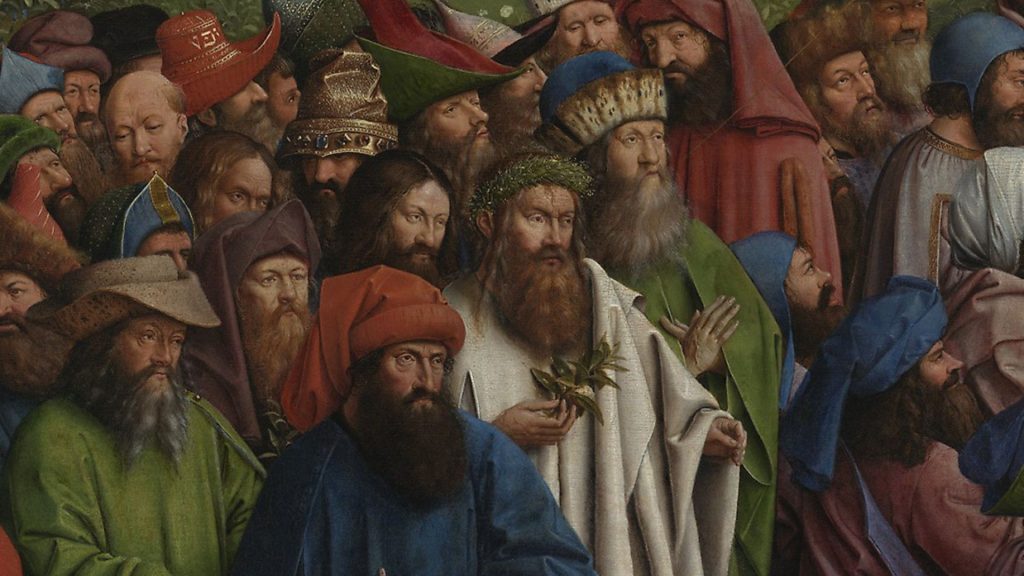
To Albrecht Dürer, travelling through the Netherlands on the last major trip of his life, the vast, multi-panelled Ghent Altarpiece was ‘a stupendous painting, full of intelligence’. For the art historian Ernst Gombrich, writing in 1950, it represented ‘the final conquest of reality in the north’. Today, David Hockney talks of it as if were a sort of Rosetta Stone, full of secrets, and best looked at through binoculars.
Since its completion in 1432, The Adoration of the Mystic Lamb, or the Ghent Altarpiece as it is usually known, has been spoken of in superlatives, its verisimilitude, glowing colours and iconographic complexity marking it as a turning point in the history of art, uniquely coveted and admired.
That didn’t stop it being a target for Calvinist iconoclasts in the 16th century, since when it has been variously rescued from fire, looted, cut up and sold off.
It was successfully hidden from the invading German army during the First World War only to have two panels stolen in 1934, one of which has never been recovered, and it remains among the world’s most notorious unsolved art crimes.
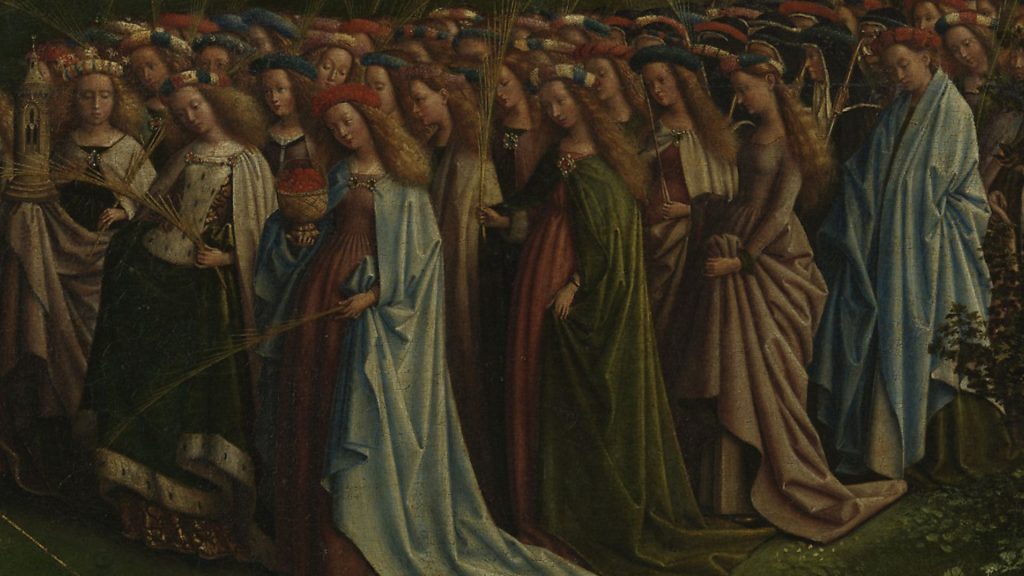
Hitler and Göring both wanted the altarpiece, and in 1944 it was rescued from the Altaussee salt mines in Austria, where it had been stashed along with more than 6,000 other works of art destined for Hitler’s planned super-museum.
Hockney is right about the binoculars: now secured in a glass enclosure in St Bavo’s cathedral, Ghent, the altarpiece is difficult to look at closely. Jan van Eyck, to whom the work is attributed, began his career as a manuscript illuminator, and vast as it is, the Ghent Altarpiece contains a world in miniature, its wings traditionally opened on Sundays and feast days to reveal the pillars of Christian faith contained in its jewel-like interior.
Details unfurl within details, and sometimes uncannily so: the altarpiece includes one of the earliest accurate depictions of the moon.
For a short time, such astonishing details are a little easier to see. Until April 30, the eight panels that together form the exterior of the altarpiece are among the highlights of Van Eyck: An Optical Revolution at Ghent’s Museum of Fine Arts. The panels are displayed at eye level as individual works, having received conservation treatment as part of a 2.2 million euro project begun in 2012.
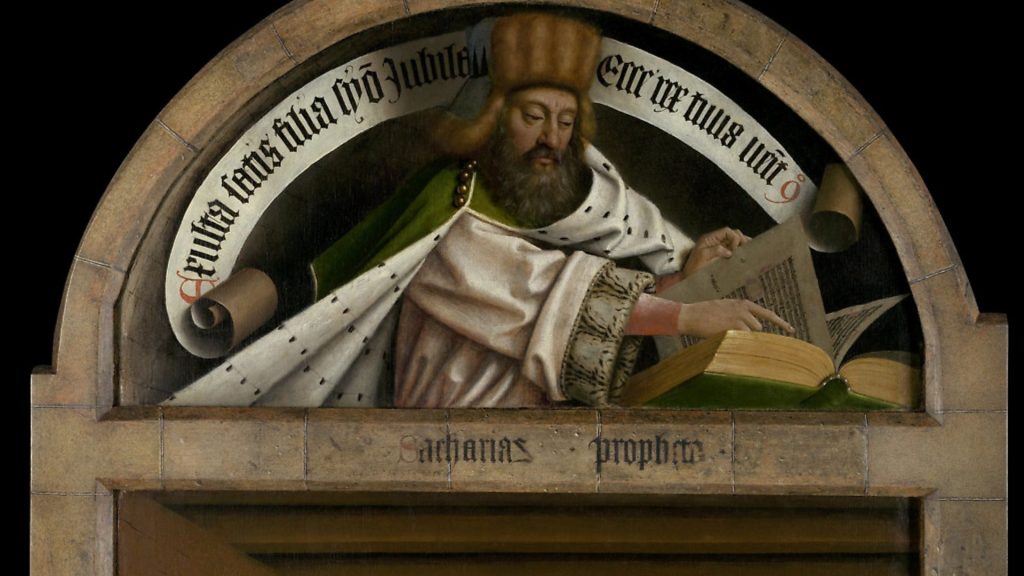
Yet to be conserved, two panels depicting Adam and Eve are also included in the exhibition, alongside significant loans of works by Van Eyck and his contemporaries from collections across Europe and North America.
Jan van Eyck and his brother Hubert started work on the Ghent Altarpiece in the mid-1420s, but it was completed by Jan following his brother’s death in 1426, and the extent and nature of Hubert’s contribution remains unclear. For Jan, the painting would confirm his status as a genius, celebrated for the unprecedented realism of his paintings.
Filled with texture and colour, and even music from a choir of angels, the Ghent Altarpiece is a remarkably elaborate, multi-sensory piece of theatre, that combines the mundane paraphernalia of daily life with a richly imagined celestial realm.
The altarpiece was commissioned for the funerary chapel of Jodocus Vijd and Elisabeth Borluut, a Ghent couple who like many merchants and aristocrats in the Middle Ages sought to offset their wealth through good deeds.
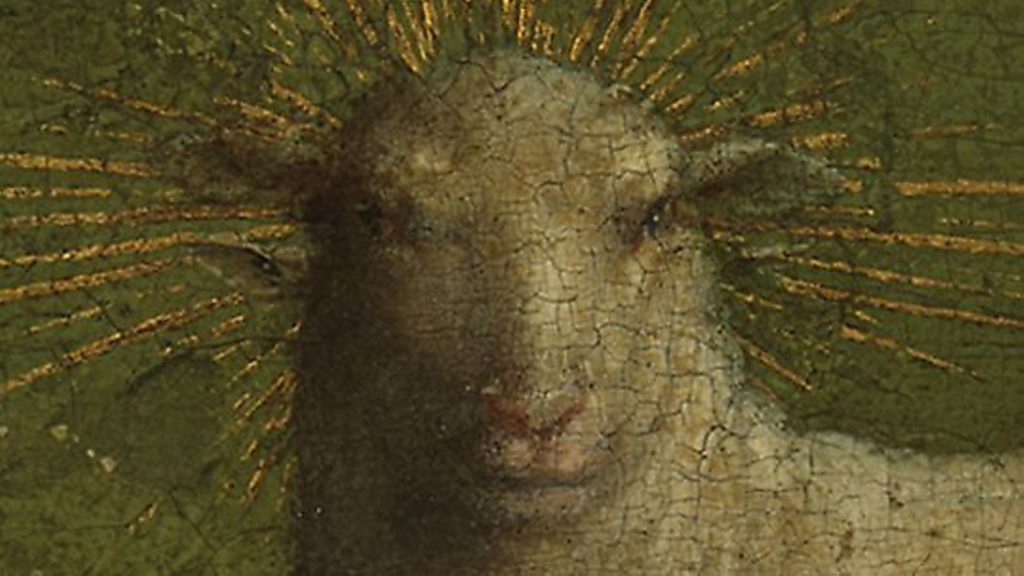
The chapel in the east end of St Bavo’s cathedral was a conspicuous act of piety, the magnificent altarpiece, with its naturalistic portraits of the donor couple, a moving plea to the living to pray for their souls in purgatory.
Kneeling in prayer, the donor couple are far from humble, occupying a large and prominent position on the exterior of the altarpiece. Even so, they are strikingly honest portraits, that acknowledge lines and imperfections. As a court painter to Philip the Good, the Duke of Burgundy, Van Eyck was frequently called upon to make portraits. His portrait of Baudouin de Lannoy, c.1435, is a typical example of Van Eyck’s court portraiture, the three-quarter profile conferring dignity in a way that mitigates its uncompromising naturalism. Such apparently lifelike treatments of the human subject were novel, and must have had a huge impact on audiences at the time. Still, the Ghent Altarpiece goes further, and in his commitment to imitating observed reality, Van Eyck attempted to create a ‘total’ work of art that blurred the boundaries between illusion and reality.
Tiny details, including fictive stonework, and accurately placed reflections of the chapel windows painted into gemstones, show the lengths that Van Eyck went to in order to integrate his painting within the chapel architecture.
Illusionistic stonework also rationalises the complex spaces described in the eight outer panels. The figures of Vijd and Elisabeth Borluut appear in stone niches in the lower, earthly tier, their hands clasped in prayer before statues of Saints John the Baptist and the Evangelist.
In the uppermost portion of each wing, prophets and sibyls foretell the coming of Christ, while an Annunciation scene, set in a domestic, and yet not quite earthly interior, occupies the full width of the middle register.
Through images that span the Old and New Testaments, the personal salvation of Vijd and Elisabeth Borluut is tied into the overarching Christian narrative of sin and redemption.
This impressive but rather sober view of the altarpiece was also the most familiar one, and it must have been a moment of high drama when on holy days the doors were thrown open to reveal scenes of figures in dazzling colour, thronging to see the sacrifice of the Mystic Lamb.
Set in a lush, green, celestial place, the Lamb of God ‘which taketh away the sin of the world’ occupies the central panel, providing the focus for a series of images on the theme of redemption, from Adam and Eve’s expulsion from the Garden of Eden, to the coming of Christ, his sacrifice, and resurrection.
Here too, space is depicted with a level of sophistication that was entirely novel: the remoteness of these heavenly scenes is emphasised by our proximity to Adam, whose foot edges out of the picture and into our space.
The recent conservation work has found that large areas of the altarpiece were painted over in the 1550s when a combination of wear and tear, and the growing influence of Calvinism may have led to ‘repairs’ that conformed to contemporary, Protestant tastes. Conservators say that removing these additions has been a revelation, and the most dramatic discovery has been the Lamb of God itself.
Van Eyck’s original painting was strangely anthropomorphic with humanoid eyes and lips, that, in the climate of the Reformation, may have been considered blasphemous.
For commentators like the Renaissance art historian Giorgio Vasari, Van Eyck’s use of oil paint seemed the only reasonable explanation for the radically different appearance of his paintings.
Though Vasari wrongly credited Van Eyck with the invention of oil painting, which it is now believed existed in some form as early as the eighth century, he did discover how to make it a manageable medium, and by adding siccatives – drying agents – he was able to reduce its drying time. This allowed him to exploit the transparency of oil paint, building depth of colour and tone by applying paint in layers, called glazes.
This was a revelation: the prevalent medium of the time was egg tempera, in which pigments bound with egg yolk formed an opaque paint, so fast-drying that it had to be applied in rapid, tiny brushstrokes.
Glazing allowed a much greater tonal range than had been possible with tempera, which helped to produce more naturalistic effects.
According to the exhibition curators, Van Eyck’s observation of nature was so acute ‘that types of rock can be identified, medical conditions diagnosed, cloud types classified and birds recognised from their flight’.
Certainly, there is more to Van Eyck’s naturalism than his materials, and in his controversial book Secret Knowledge, published in 2001, David Hockney claimed that Van Eyck’s extraordinary accuracy results not just from dedicated looking, but from the use of optical aids that would have allowed him to see objects in magnification.
The theory has not been proven, but Van Eyck would certainly have had plenty of opportunities to encounter new technologies and scholarship.
As a painter and diplomat in the Burgundian court of Philip the Good, Van Eyck was part of a cultural and intellectual elite to rival anywhere else in Europe. He travelled widely and often, and within the Duke’s own territories the cities of Bruges and Ghent were among the most important and powerful trading centres north of the Alps. Here Van Eyck might well have come into contact with the most advanced optical instruments of the time.
Networks of power and commerce also helped the spread of his radical new methods, and multiple copies of works such as his The Madonna at the Fountain, c.1440, were produced by his workshop and followers. Netherlandish oil paintings were circulating among the courts of Italy and Spain, too, and Van Eyck’s innovations in the fields of portraiture and landscape painting would have lasting influence. The most mysterious aspect of Van Eyck’s practice remains his facility with oil paints, and it is testament to his technical mastery that it would take until the 16th century for the medium to become standard in Italy, with early adopters continuing to apply it like tempera, rather than the luminous glazes that continue to dazzle and astonish today.
Van Eyck: An Optical Revolution is at the Museum of Fine Arts in Ghent until April 30; to find out more, go to: visit.gent.be/en/calendar/van-eyck-optical-revolution.










